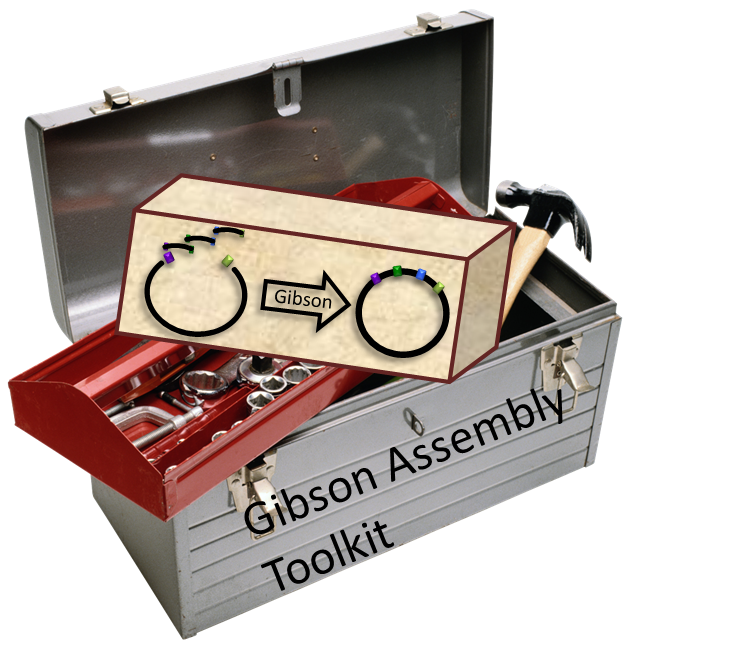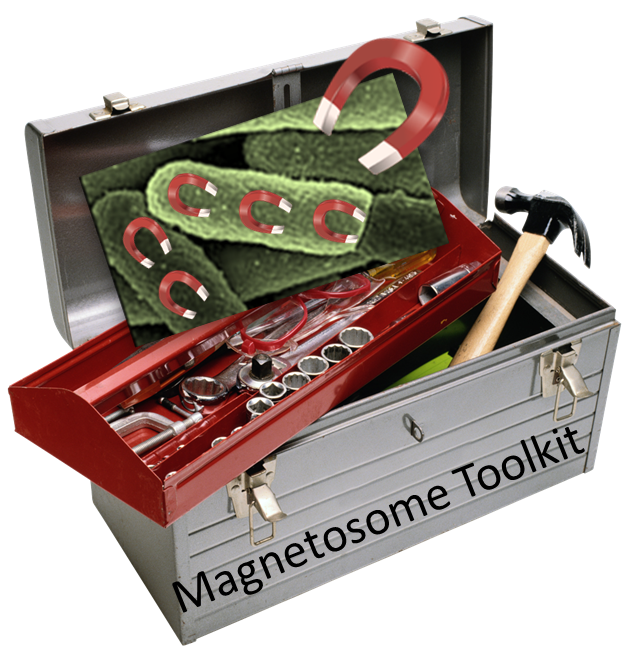Team:Washington/Magnetosomes/Background
From 2011.igem.org
(→Magnetosome Toolkit) |
(→Magnetosome Toolkit) |
||
| Line 24: | Line 24: | ||
='''Magnetosome Toolkit'''= | ='''Magnetosome Toolkit'''= | ||
| - | To demonstrate the utility of pGA vectors In addition, we were also ambitious about assembling a large gene-construct of over 16 kb. Therefore, utilizing the pGA vectors and Gibson cloning methods, we assembled the [https://2011.igem.org/Team:Washington/Magnetosomes/Magnet_Toolkit Magnetosome Toolkit] from the ''mamAB'' operon of the magnetotactic bacterium ''Magnetospirillum magneticum'' with the goal to generate magnetic ''E. coli'', or "ferriColi". | + | To demonstrate the utility of pGA vectors In addition, we were also ambitious about assembling a large gene-construct of over 16 kb. Therefore, utilizing the pGA vectors and Gibson cloning methods, we assembled the [https://2011.igem.org/Team:Washington/Magnetosomes/Magnet_Toolkit Magnetosome Toolkit] from the ''mamAB'' operon of the magnetotactic bacterium ''Magnetospirillum magneticum'' with the goal to generate magnetic ''E. coli'', or "''ferriColi''". |
Revision as of 17:48, 27 September 2011
As with the expansion of the iGEM competition, many iGEM teams have started to investigate the possibility of working with large-scale genomes. Large-scale gene manipulation often requires the use of tools which allow multiple gene inserts as to bring the cloning project from single gene level to a multiple gene level. However, the current BioBrick standard vectors available through iGEM are not designed for multiple-insert cloning. Therefore, the UW iGEM team decided to research methods to improve cloning efficiency and as a result, two "toolkits" were submitted to the registry.
Gibson Assembly Toolkit
To expand on work started by the 2010 UW IGEM team, this year we developed and submitted a set of plasmid backbones for BioBricks that are optimized for Gibson assembly. Based on the bglBrick standard [http://dspace.mit.edu/bitstream/handle/1721.1/46747/BBFRFC21.pdf?sequence=1 RFC 21], these pGA - plasmids for Gibson Assembly - vectors comprise the Gibson Assembly Toolkit. These vectors have much higher cloning efficiencies than the equivalent pSB vector and are fully compliant with BioBrick [http://www.synbio.org.uk/gibson/downloads/files/RFC57.pdf RFC 57] developed by the 2010 Cambridge iGEM team.
- What's in the Gibson Assembly Toolkit?
Five plasmid backbones for high-efficiency, multiple-fragment assemblies.
- 2 high copy vectors for gene extraction and cloning: pGA1A3, pGA1C3
- 1 medium copy expression vector: pGA3K3
- 2 low copy expression vectors: pGA4A5, pGA4C5
Magnetosome Toolkit
To demonstrate the utility of pGA vectors In addition, we were also ambitious about assembling a large gene-construct of over 16 kb. Therefore, utilizing the pGA vectors and Gibson cloning methods, we assembled the Magnetosome Toolkit from the mamAB operon of the magnetotactic bacterium Magnetospirillum magneticum with the goal to generate magnetic E. coli, or "ferriColi".
What’s in the Magnetosome Toolkit?
- The genes from the essential mamAB operon from Magnetospirillum magneticum for
- Our favorite genes as translational fusions with superfolder gfp in pGA vectors
- A table compiling individual gene functions from our literature search
 "
"




